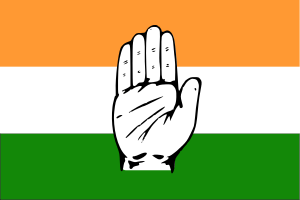Jammu and Kashmir Legislative Assembly election, 1987
| | |||||||||||||||||||||||||||||||||||||||||||||||||||||||||||||||||||||
| |||||||||||||||||||||||||||||||||||||||||||||||||||||||||||||||||||||
| |||||||||||||||||||||||||||||||||||||||||||||||||||||||||||||||||||||
| |||||||||||||||||||||||||||||||||||||||||||||||||||||||||||||||||||||
Elections for the Indian state of Jammu and Kashmir were held on 23 March 1987. Farooq Abdullah was reappointed as the Chief Minister.[1]
Widespread allegations of rigging of the election have been made.[2][3][4][5] This led to Insurgency in Jammu and Kashmir post that elections and Exodus of more than 3 lakhs Kashmiri Pandits.[6] Later, Indian general election, 1989 saw less than 10 percent voting in Kashmir valley. According to official figures, the polling stood at marginal 5 percent in Srinagar and Anantnag Lok Sabha segments.[7] Thereafter,President rule was imposed in Jammu and Kashmir from 1990 to 1996.[8] 1987 election in a way was a watershed in the politics of the Jammu and Kashmir state.[9][10][11][12]
Background
Four months after the assumption of power by Dr. Farooq Abdullah, fresh elections were held for the State Assembly on 23 March 1987 which were contested by the Congress-I and the NC, in coalition. Before the elections, various anti-establishment groups including Jamaat-e-Islami joined hands to form a Muslim United Front (MUF) mainly pointing out that the NC had capitulated before the Centre for the sake of power and bartered away the special status of the State. Efforts were made to arouse Muslim sentiments along communal lines. The NC-Congress(I) combine contested all the 76 seats and the MUF, 43 seats.
Voting
In 1987 when Muslim United Front, largely current Hurriyat, believed that it would win the elections in the Kashmir Valley, its leaders were in touch with the then BJP leaders in Jammu to form a coalition government in Srinagar. But, the elections were heavily rigged changing the course of politics in the state. The MUF got four seats,even though it had polled 31% votes and the BJP two seats. Although Syed Ali Shah Geelani won election from his Sopore seat.[13] Many see this rigged election as a cause of militancy in Kashmir.[14] Elections for Bhadrawah, Leh and Kargil were held in June 1983, which was also won by the Congress-NC alliance.
Government Formation
The NC-Congress alliance won 66 seats.[15] This led to widespread allegations of rigging and misuse of power. Allegations of malpractices and rigging led to the disillusionment of Kashmiris. Accompanied by rampant corruption by coalition, the government failed to administer the State effectively. In this environment, secessionist and subversive elements started claiming that they had been denied democratic rights illegally and began justifying a recourse to unconstitutional and other methods. It was in this environment that Pakistan encouraged Kashmiri youth to come across the Line of Control and receive arms training to begin an armed secessionist movement.[16]
See also
- Jammu and Kashmir Legislative Assembly election, 2014
- Hurriyat and Problems before Plebiscite
- Syed Ali Shah Geelani
References
- ↑ Statistical Report on the General Election, 1987, Election Commission of India.
- ↑ Sameer Arshad. "History of electoral fraud has lessons for BJP in J&K". Times of India. Retrieved 23 November 2014.
- ↑ Elections in Kashmir
- ↑ PDP’s Karra blames NC for ‘tyrannical’ policies, killing of youths
- ↑ http://www.caravanmagazine.in/vantage/mufti-mohammad-sayeed-shaped-1987-kashmir-elections
- ↑ Kashmir insurgency, 20 years after
- ↑ Decline in voter turnout in Kashmir after ‘rigged election of 1987’
- ↑ J&K Election history
- ↑ Assembly Elections 1987
- ↑ The Siege Of Kashmir
- ↑ Question of Simple Majority
- ↑ How representative is Jammu and Kashmir assembly?
- ↑ Sitting and previous MLAs from Sopore Assembly Constituency
- ↑ Is BJP planning poll tie-ups with separatist groups in Jammu & Kashmir?
- ↑ 1987 J&K Assembly election results
- ↑ Election fever absent in Chattisinghpora


